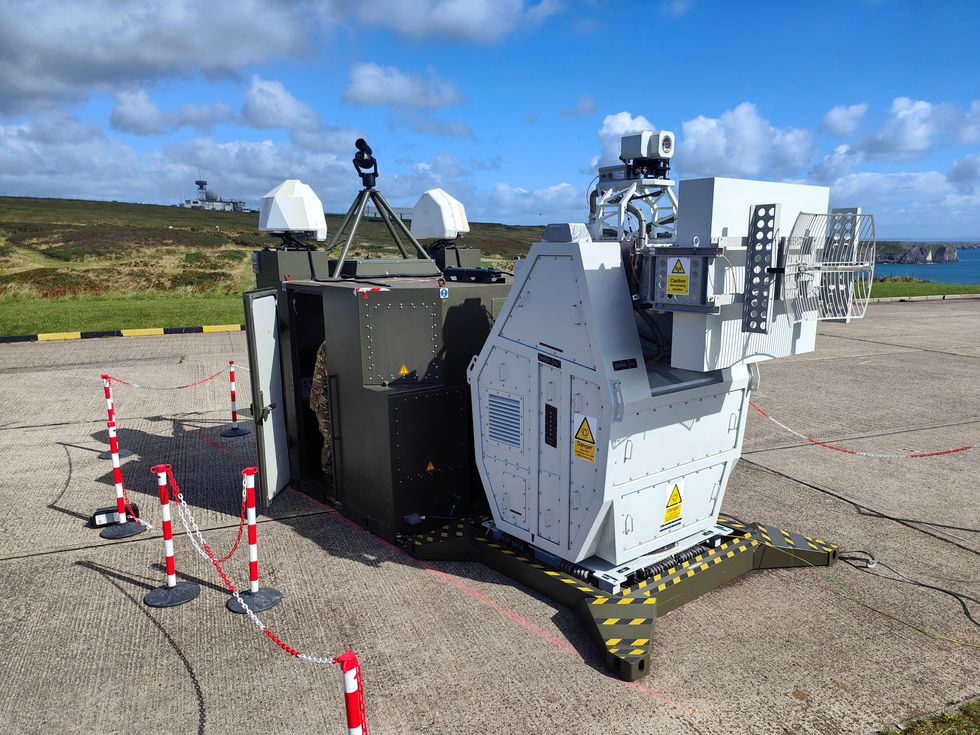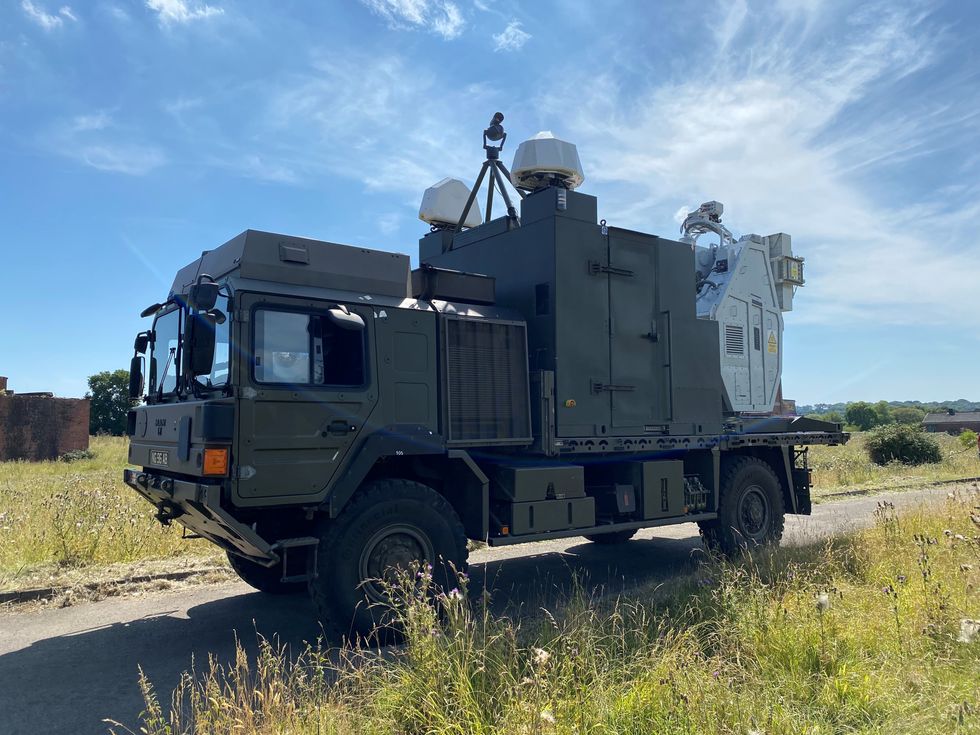British Army successfully tests radiowave weapon that can take down swarm of drones for less than cost of a pack of mince pies
'WATCH: 'Former head of the British Army calls for MORE defence spending
The RFDEW uses radio frequency rather than light energy to disrupt threats
Don't Miss
Most Read
Trending on GB News
British soldiers have successfully tested a revolutionary weapon that can disable swarms of drones using radio waves - at a cost of just 10p per shot, less than a pack of mince pies.
The Radio Frequency Directed Energy Weapon (RFDEW) can detect, track and neutralise aerial threats up to 1km away with near-instant effect.
The system, developed by a consortium led by Thales UK, uses high-frequency waves to disrupt critical electronic components inside devices, causing them to become immobilised or fall from the sky.
Unlike laser-based weapons such as DragonFire, the RFDEW disrupts hostile threats using radio frequency rather than light energy.

Radio Frequency Directed Energy Weapons (RFDEW) can take down a swarm of drones for less than the cost of a pack of mince pies
Home Office
The highly automated system can be operated by a single person and is designed to be mounted on military vehicles like the MAN SV for mobility.
The development system has been produced through collaboration between Thales UK, QinetiQ, Teledyne e2v and Horiba Mira, supporting up to 135 high-skilled jobs across Britain.
This advancement supports the Government's Plan for Change by rapidly developing technologies to strengthen national security.
Defence Procurement Minister Maria Eagle MP praised the breakthrough, stating: "The successful firing by the British soldiers of our Radio Frequency Directed Energy Weapon is another step forward for a potentially game-changing sovereign weapon for the UK."
"It's great to see defence experts and industry working collaboratively to put cutting-edge equipment in the hands of our Armed Forces."
LATEST DEVELOPMENTS

This advancement is part of the Government's Plan for Change
Home Office
The weapon represents a cost-effective alternative to traditional missile-based air defence systems.
The live firing trials were conducted by the Army's Royal Artillery Trials and Development Unit and 7 Air Defence Group at a range in West Wales.
During the tests, soldiers successfully targeted and engaged Uncrewed Aerial Systems (UAS) - marking a first for British Armed Forces.
Recent user experimentation trials have allowed Army air defence personnel to test the weapon's capabilities across different configurations and scenarios.
The development process is being delivered by Team HERSA, a joint enterprise between UK MOD's Defence Equipment & Support and Defence Science and Technology Laboratory (Dstl).
Dstl Programme Lead Matt Cork highlighted the achievement: "Getting this technology into the hands of our service personnel is hugely rewarding. Dstl has worked collaboratively with DE&S and industry which has meant the rapid evolution of radio frequency technology."
Nigel MacVean, Managing Director at Thales IAS, said: "I am thrilled with the successful RFDEW firing trials. Thales has been at the forefront of this pioneering technology for over 40 years."
The trials programme will continue, with Team HERSA working alongside operators to develop requirements, doctrine and technology for next-generation RFDEWs.








